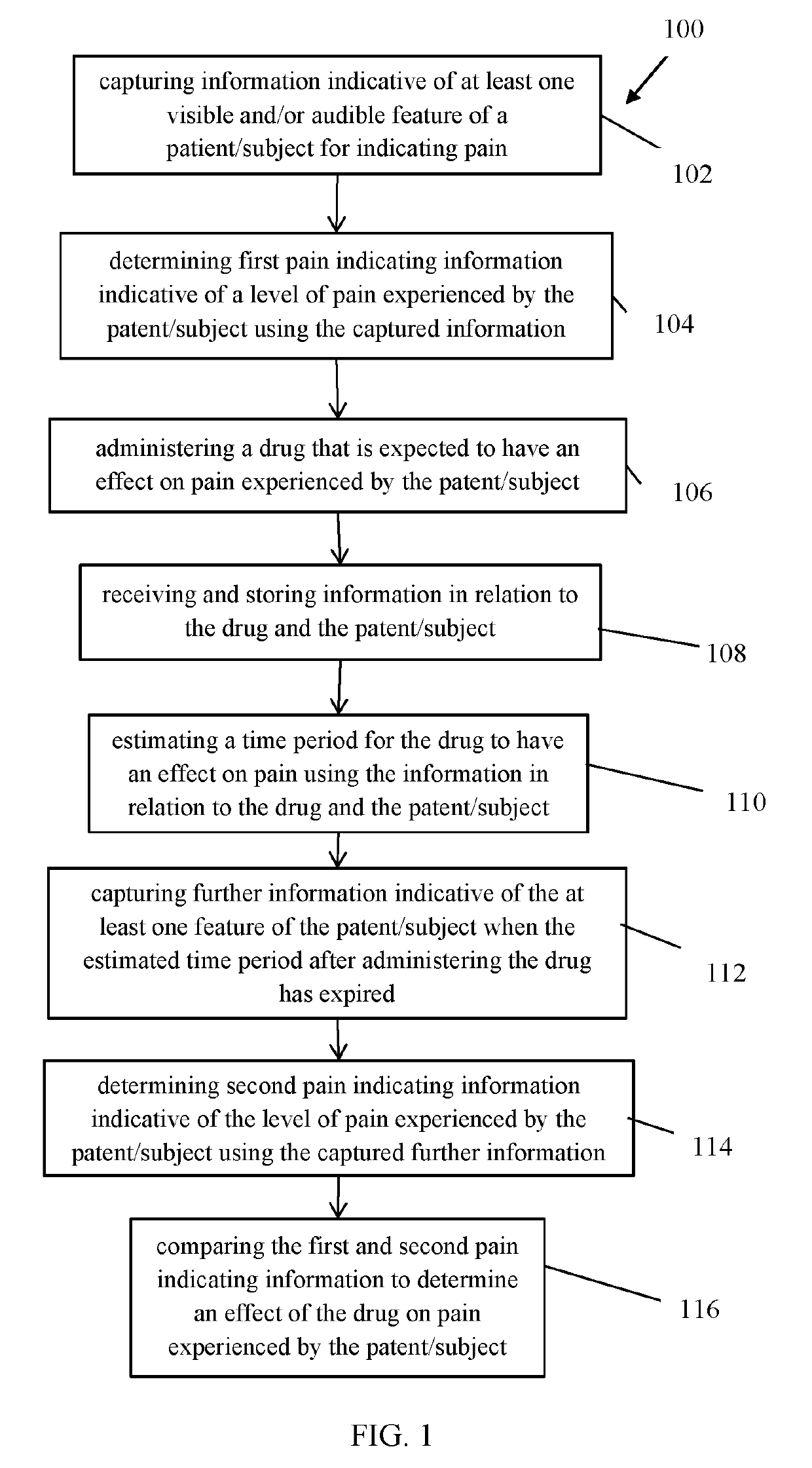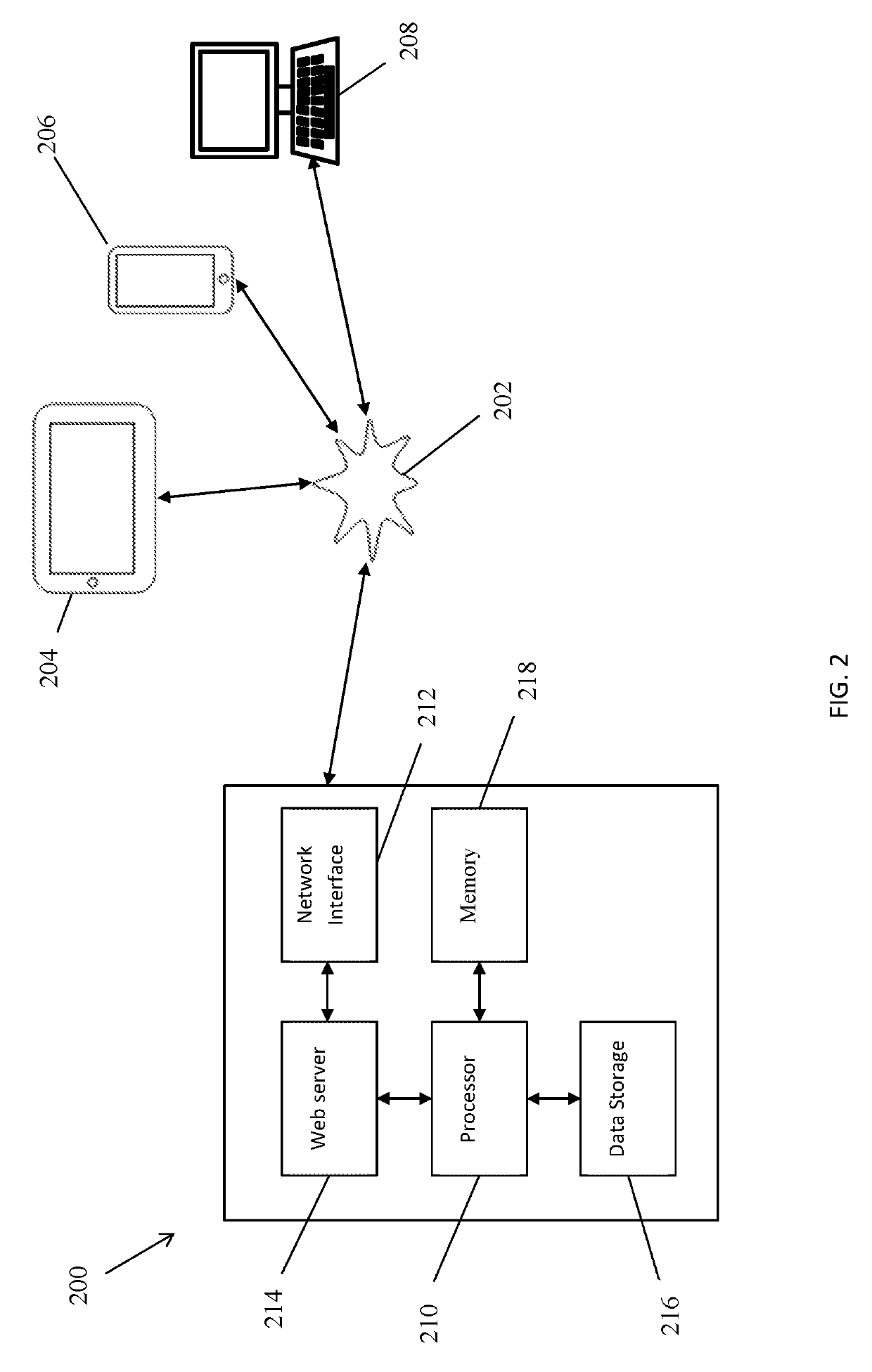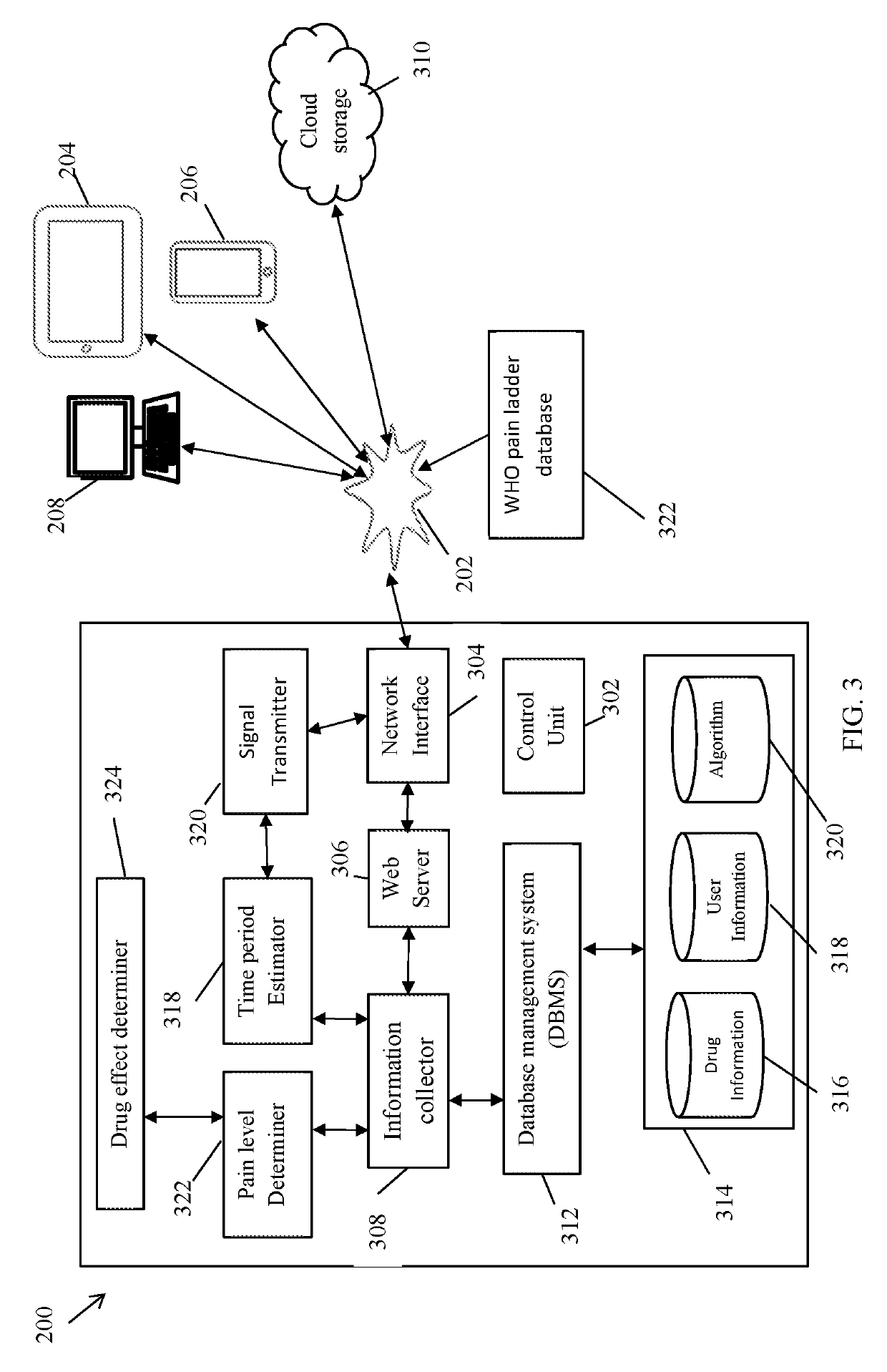Pain assessment method and system
a pain assessment and pain technology, applied in the field of pain assessment system, can solve the problems of difficult and highly subjective pain assessment among non-communicative patients such as patients with dementia or infants, patients with dementia often have pain, and pain often goes undetected and under-treated
- Summary
- Abstract
- Description
- Claims
- Application Information
AI Technical Summary
Benefits of technology
Problems solved by technology
Method used
Image
Examples
Embodiment Construction
[0093]Embodiments of the invention relate to a method and a system for determining an effect of a drug on pain experienced by a patient after administration of the drug to the patient. In this regard, information indicative of at least one visible and / or audible feature of a patient is captured that is capable of indicating pain experienced by the patient. The feature may for example be a facial feature or a vocal feature of the patient. Accordingly, the information may be in the form of an image of the face of the patient or a frequency spectrum from the voice of the patient.
[0094]Using the captured information, quantitative pain indicating information is determined indicative of a level of pain experienced by the patient after a time period when the drug is expected to have an expected effect on pain. By comparing the determined pain indicating information with reference information indicative of a reference level of pain, a patient-specific effect of the drug on pain can be deter...
PUM
 Login to View More
Login to View More Abstract
Description
Claims
Application Information
 Login to View More
Login to View More - R&D
- Intellectual Property
- Life Sciences
- Materials
- Tech Scout
- Unparalleled Data Quality
- Higher Quality Content
- 60% Fewer Hallucinations
Browse by: Latest US Patents, China's latest patents, Technical Efficacy Thesaurus, Application Domain, Technology Topic, Popular Technical Reports.
© 2025 PatSnap. All rights reserved.Legal|Privacy policy|Modern Slavery Act Transparency Statement|Sitemap|About US| Contact US: help@patsnap.com



